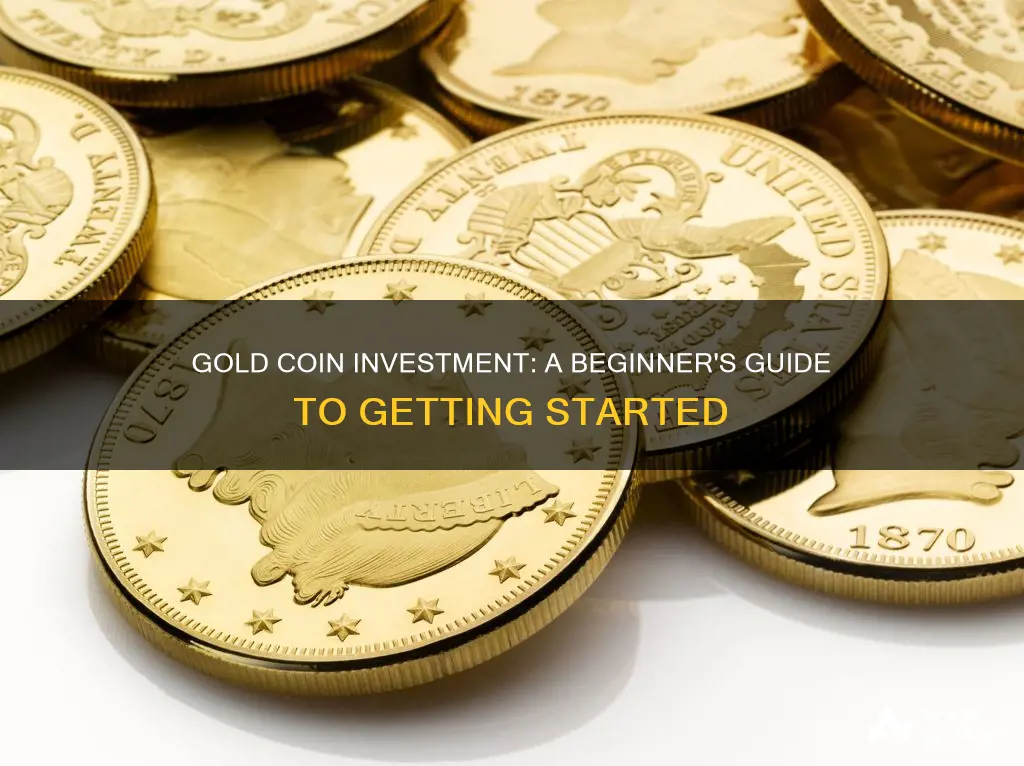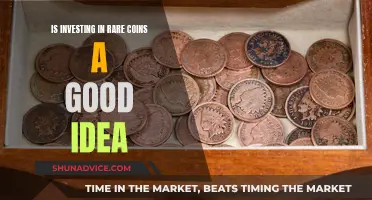
Gold has been considered a safe-haven asset for thousands of years, and today's investors are no exception. Gold is often used as a hedge against inflation and economic downturns, as it tends to retain its value or even increase in worth when other investments decline.
There are two main ways to invest in gold: purchasing physical gold or investing in gold-backed securities. Physical gold can be purchased in the form of bullion, which includes bars, ingots, coins, and rounds, or as jewellery. Gold-backed securities include gold stocks, mutual funds, exchange-traded funds (ETFs), and futures.
When deciding how to invest in gold, it is important to consider the benefits and drawbacks of each option. Physical gold provides stable value and can be easily passed on, but it may require secure storage and insurance. Gold-backed securities, on the other hand, offer more liquidity and can be traded on brokerage platforms, but they may be more volatile and subject to additional costs such as management fees. Ultimately, the best option for an individual will depend on their investment strategy, expertise, and risk tolerance.
What You'll Learn

Gold bullion coins vs bars
Gold bullion coins and bars are two of the most popular ways to invest in gold. Here are some of the key differences between the two to help you decide which option is best for you:
Gold Bullion Bars
Gold bars are a good option for those looking to invest in larger quantities of gold, as they typically come in sizes ranging from 1 gram to 1 kilogram. They are usually minted into a neat cuboid shape, with the weight and purity of the gold inscribed on the surface. Gold bars are often sold in sealed packages to protect the bar and come with an assay certificate that guarantees their weight, purity, and that they meet Good Delivery Standards. They are typically produced in 24 carats (99.99% pure gold).
One of the main advantages of investing in gold bars is their cost-effectiveness. They tend to have lower premiums compared to gold coins, making them a more affordable option for those looking to buy gold at the lowest price per gram. The larger the gold bar, the smaller the premium. Gold bars are also a good option for long-term investments, as they will cost less per gram over time compared to gold coins.
However, one disadvantage of gold bars is their lack of flexibility. If you invest in a large gold bar, you may face challenges if you want to sell part of your investment, as you cannot cut a gold bar in half. Additionally, smaller local shops may be less likely to buy a large gold bar compared to multiple smaller bars.
Gold Bullion Coins
Gold coins, on the other hand, offer more flexibility in terms of investing. They are available in various sizes, such as 1 ounce, 1/2 ounce, 1/4 ounce, and 1/10 ounce, making them ideal for trading. Popular gold coins include the South African Krugerrand, Canadian Maple Leaf, American Eagle, and British Britannia. Gold coins can contain either 22 carats (91.67% pure gold) or 24 carats.
Gold coins often have a higher premium compared to gold bars due to the additional design and manufacturing costs involved in minting the coins. However, this premium can be offset by buying in bulk, which results in a lower gold price per gram. Gold coins also have a collectible aspect, with certain coins highly sought-after by collectors, which may increase their value over time.
Another advantage of gold coins is their universal recognition, making them easy to resell. Their small size makes them easy to transport and store, and they are often exempt from certain taxes, such as Capital Gains Tax in the UK for British gold coins.
Both gold bullion coins and bars have their advantages and disadvantages, and the best option for you will depend on your individual circumstances and investment goals. If you are looking for a cost-effective way to invest in larger quantities of gold and are planning to hold onto your investment for the long term, gold bars may be the better choice. On the other hand, if you prioritize flexibility, liquidity, and the historical and collectible value of gold, gold coins may be the preferred option.
How to Invest in Dogecoin: A Beginner's Guide
You may want to see also

Gold coin types
Gold coins are a popular choice for investors due to their divisibility and flexibility. They are also valued for their durability, malleability, and rarity. Gold coins have been minted for thousands of years, creating a vast and diverse market.
- Bullion coins are minted primarily for investment purposes. They are valued based on their solid gold content and the market price of the precious metal. Examples include the Gold Britannia and Gold Sovereign Coins, which are popular among investors due to their high gold content and purity (22-24 carats). These coins offer tax advantages in certain countries, such as the UK, where they are exempt from Capital Gains Tax (CGT) and Value-Added Tax (VAT).
- Commemorative coins celebrate specific events, anniversaries, or historical figures. They often feature intricate designs and limited mintages, making them appealing to collectors. An example is the Memorial Gold Sovereign, which commemorates Queen Elizabeth's reign and King Charles III's new chapter.
- Numismatic coins are rare or historically significant coins collected for their value beyond their precious metal content. They often command higher premiums due to their scarcity and collector demand. Investing in numismatic coins requires a deep understanding of the market and the ability to assess a coin's potential value.
- Fractional gold coins refer to coins that are smaller in weight and size than standard gold coins. Terms such as '1oz', 'half', '1/4', and '1/10' indicate the weight of the coin, with '1oz' being the standard weight of one troy ounce or approximately 31.1 grams. Examples of fractional gold coins include the Half Gold Britannia and the Quarter American Gold Eagle. While these coins are more affordable due to their smaller size, they become increasingly expensive per gram as the weight decreases.
When investing in gold coins, it is important to consider factors such as gold content, liquidity, tax benefits, and aesthetics. It is also crucial to purchase gold coins from reputable dealers and stay informed about the current market price of gold.
The Crypto Investment Guide: Getting Started
You may want to see also

Gold coin dealers
Reputation and Track Record:
It is important to choose a reputable and trusted gold coin dealer. Look for dealers who have been in the industry for a long time and have a good track record. For example, Kitco Metals has been in business since 1977 and is a trusted online gold coin dealer.
Pricing and Discounts:
When buying gold coins, it is important to consider the price and any discounts offered by the dealer. Gold coin prices are influenced by the fluctuating spot gold price, and dealers usually sell at a few percentage points above the live spot price. Keep an eye out for dealers who offer discounts or preferential exchange rates on larger orders.
Selection and Recognition:
Look for gold coin dealers who offer a wide selection of gold coins from different mints and countries. Popular options include American Gold Eagles, Canadian Gold Maple Leafs, South African Gold Krugerrands, and Australian Gold Kangaroos. Dealers should also offer coins of different sizes, ranging from 1 oz to 1-gram coins.
Shipping and Insurance:
When purchasing gold coins online, ensure that the dealer provides secure and insured shipping. Some dealers offer free shipping for orders above a certain amount. For example, BGASC offers free shipping on orders over $199.
Customer Service and Support:
Choose a gold coin dealer that provides excellent customer service and support. This includes helpful account managers who can answer your questions and ensure you feel comfortable and informed about your purchase.
Storage and Security:
Consider the storage and security options offered by the gold coin dealer. Some dealers may provide allocated storage programs or safety deposit boxes for an additional fee.
Gold Coins vs Bars: Which is the Better Investment?
You may want to see also

Gold coin purity
Most gold coins minted since 1800 are 90-92% gold (22-karat), while most of today's gold bullion coins are pure gold. The purity of a gold coin does not always correlate with its value. For example, the American Gold Eagle and South African Krugerrand are 91.7% gold by weight, but they are two of the most recognisable and coveted gold coins in the world.
The karat system of purity is similar to fineness, but it uses 24 as its base. So, a 22-karat gold coin is 91.67% pure gold (22 divided by 24).
It is technically impossible to produce a coin that is 100% pure gold because gold is a very soft metal, and the higher the gold purity of a coin, the softer it is. The closest you can get to 100% pure gold coins are "four-nines" and "five-nines" gold coins, which are produced by some of the world's most respected and technologically advanced mints. Four-nines gold coins are 99.9% pure, while five-nines gold coins are 99.99% pure.
- Canadian Gold Maple Leaf Coin
- American Gold Buffalo Coin
- Austrian Gold Philharmonic Coin
- Great Britain Gold Britannia Coin
- Australian Gold Kangaroo Coin
Understanding Taxable Interest as Investment Value
You may want to see also

Gold coin resale
When it comes to where to sell your gold coins, there are several options, including online gold bullion buyers, local coin shops, pawn shops, and coin shows or expos. Online buyers often offer the highest prices due to lower overhead costs, but it is crucial to ensure they are reputable by checking reviews and their BBB rating. Local coin shops provide the benefit of immediate cash and personalised service, but they may offer slightly lower prices. Pawn shops are a quick option but tend to provide the least value and have the highest chances of sellers getting ripped off. To get the best price, it is recommended to sell to a trusted and reliable gold buyer, such as Abe Mor Diamond Cutters, which offers competitive prices and free, fully insured delivery.
Additionally, when selling gold coins, it is important to be aware of any fees and to find secure storage for your coins. Gold dealers typically charge more than the spot price, which includes various fees and charges. Storing gold safely can also be expensive, as safety deposit boxes at banks can cost anywhere from $30 to a few hundred dollars a year. It is also recommended to consider purchasing insurance for your gold coins, ensuring that your policy covers the exact type of asset you have.
Which Crypto Coins Are Attracting Institutional Investors?
You may want to see also
Frequently asked questions
Gold coins are minted by government bodies and private companies. They are made from pure gold and come in a variety of sizes, usually ranging from one ounce to one-tenth of an ounce.
You can buy gold coins from online dealers, pawn shops, collectors, and some jewelry stores.
Gold coins are a good investment if you want to own a physical, valuable asset. They also provide stable value and don't need to be watched as closely as other investments. However, you may need a secure vault or insurance to protect your gold coins, and there is a risk of scams from fraudulent online gold dealers.
All gold coins produced by government mints are real. The Royal Canadian Mint has also authorized certain dealers, who can authenticate gold coins using state-of-the-art technology.
The minimum number of gold coins you can buy varies depending on the dealer and the type of coin. Some dealers require a minimum purchase of 10 coins, while others sell gold coins individually.







